| Coach | NA |
| Venue | MCH Arena |
FC Midtjylland Trivia
FC Midtjylland predictions
Predictions for FC Midtjylland: See upcoming and historic predictions for FC Midtjylland below.
Disclaimer: Past performance does not guarantee future results. Betting involves risk; only wager what you can afford to lose. Always gamble responsibly.
FC Midtjylland Opinions
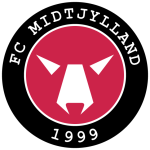 Who is the greatest FC Midtjylland player of all time?
Who is the greatest FC Midtjylland player of all time?
FC Midtjylland latest results
| 14/04 | - | ||
| 07/04 | 0 - 1 | ||
| 01/04 | 2 - 3 | ||
| 17/03 | 3 - 0 | ||
| 01/03 | 2 - 0 |
FC Midtjylland Injuries & Suspensions
| Players | Type | Last Update |
|---|
FC Midtjylland latest transfers
| Date | Player | From | To | Price |
|---|---|---|---|---|
| 2024-02-01 | A. Kamara | Randers FC | FC Midtjylland | € 125K |
| 2024-01-31 | N. Dyhr | FC Midtjylland | St. Louis City | € 500K |
| 2023-08-28 | Lee Han-Beom | FC Seoul | FC Midtjylland | € 450K |
| 2023-08-07 | G. Isaksen | FC Midtjylland | Lazio | € 12M |
| 2023-07-07 | S. Ingason | PAOK | FC Midtjylland | € 3.6M |
| 2023-01-31 | O. Diomande | FC Midtjylland | Sporting CP | € 7.5M |
| 2023-01-15 | A. Dreyer | FC Midtjylland | Anderlecht | € 4.2M |
| 2022-08-02 | L. Pfeiffer | FC Midtjylland | VfB Stuttgart | € 2.9M |
| 2022-07-06 | A. Dreyer | Rubin | FC Midtjylland | € 5M |
| 2022-07-01 | O. Fraulo | FC Midtjylland | Borussia Monchengladbach | € 2M |
Superliga standings
| Rank | Team | MP | W | D | L | GF | GA | GD | Pts |
|---|---|---|---|---|---|---|---|---|---|
| 1 |
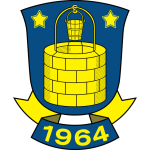 Brondby
Brondby
|
23 | 15 | 5 | 3 | 46 | 21 | 25 | 50 |
| 2 |
 FC Midtjylland
FC Midtjylland
|
23 | 15 | 3 | 5 | 45 | 26 | 19 | 48 |
| 3 |
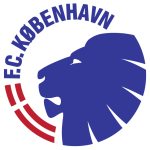 FC Copenhagen
FC Copenhagen
|
23 | 14 | 3 | 6 | 46 | 25 | 21 | 45 |
| 4 |
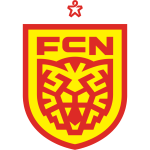 FC Nordsjaelland
FC Nordsjaelland
|
23 | 11 | 7 | 5 | 38 | 23 | 15 | 40 |
| 5 |
 Aarhus
Aarhus
|
23 | 9 | 10 | 4 | 28 | 23 | 5 | 37 |
| 6 |
 Silkeborg
Silkeborg
|
23 | 8 | 4 | 11 | 30 | 34 | -4 | 28 |
| 7 |
 Randers FC
Randers FC
|
19 | 5 | 7 | 7 | 22 | 32 | -10 | 22 |
| 8 |
 Odense
Odense
|
19 | 5 | 5 | 9 | 23 | 29 | -6 | 20 |
| 9 |
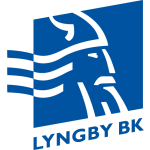 Lyngby
Lyngby
|
19 | 5 | 5 | 9 | 23 | 31 | -8 | 20 |
| 10 |
 Viborg
Viborg
|
19 | 5 | 5 | 9 | 20 | 33 | -13 | 20 |
| 11 |
 Vejle
Vejle
|
19 | 4 | 6 | 9 | 18 | 21 | -3 | 18 |
| 12 |
 Hvidovre
Hvidovre
|
19 | 1 | 5 | 13 | 12 | 40 | -28 | 8 |
About FC Midtjylland
FC Midtjylland is a professional football club based in Herning and Ikast in the midwestern part of Jutland, Denmark. The club was established on 2nd April 1999 as a result of a merger between Ikast FS (founded in 1935) and Herning Fremad (founded in 1918). The merger was aimed at creating a team that could consolidate the footballing powers of the region and compete at the highest level of Danish football.
The name "Midtjylland" translates to "Central Jutland," reflecting the club's geographical location. The club's home ground is the MCH Arena, which has a seating capacity of 11,800. The team's colors are black and red, and their emblem features a wolf, earning them the nickname "Ulvene," which means "The Wolves."
FC Midtjylland has been a consistent performer in the Danish Superliga, the top tier of Danish football. They won their first Superliga title in the 2014-2015 season, a mere 16 years after their formation. This was followed by another championship in the 2017-2018 season, and again in the 2019-2020 season, establishing them as a dominant force in Danish football.
The club is renowned for its youth academy, which has produced several players who have gone on to play for the Danish national team and in major European leagues. The academy is based on a model that combines football training with school education, ensuring that the players also focus on their academic development.
FC Midtjylland made headlines in 2014 when it was taken over by Matthew Benham, a British professional gambler and football club owner. Benham introduced a data-driven approach to the club's operations, using statistical analysis to guide decisions on player recruitment, team selection, and tactics. This approach, often compared to the "Moneyball" strategy in baseball, has been credited with contributing to the club's success.
In the 2020-2021 season, FC Midtjylland made their debut in the group stage of the UEFA Champions League, the most prestigious club competition in European football. Despite being drawn in a tough group with Liverpool, Atalanta, and Ajax, the team managed to secure their first point in the competition in a 1-1 draw against Atalanta.
FC Midtjylland's rise to the top of Danish football and their innovative approach to the game have made them one of the most interesting and respected clubs in Scandinavia. Their success serves as a model for other clubs in smaller footballing nations, showing that with the right strategies and investment in youth development, it is possible to compete with the best.















